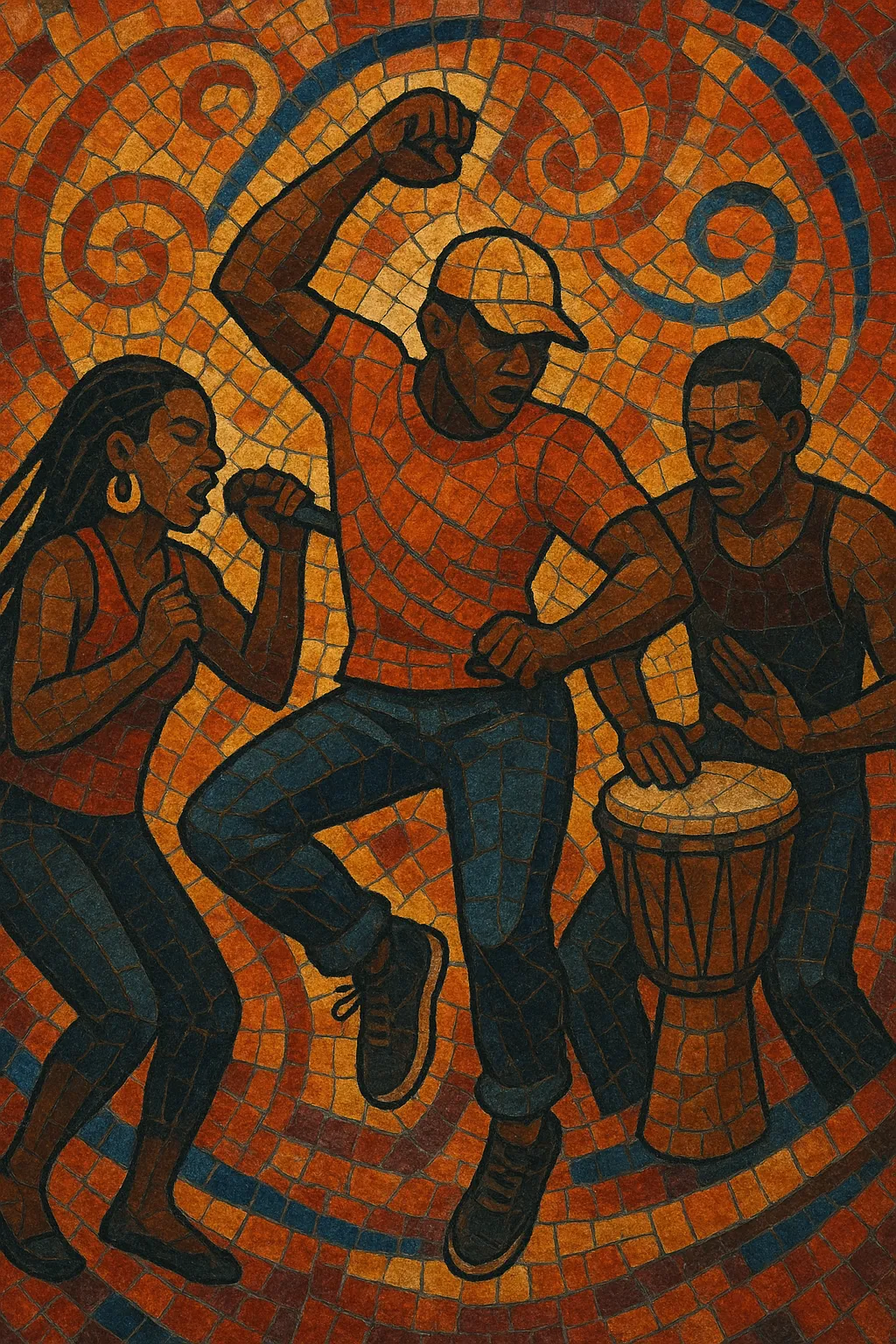Kuduro is a high-energy dance music and street culture that originated in Angola in the late 1980s and early 1990s. Its name comes from Angolan Portuguese, roughly meaning “hard butt,” a playful reference to the explosive, physically demanding dance moves and the hard-hitting, percussive beats that drive the style.
Musically, kuduro fuses local Angolan rhythms with electronic dance music, hip hop, ragga/dancehall, and Caribbean influences like soca and zouk. Tracks typically sit around 140–150 BPM, feature pounding, syncopated kick patterns, claps on off-beats, chopped vocal shouts, sirens, and whistle FX. Harmony is sparse or loop-based; the focus is on rhythm, call-and-response MCing (in Portuguese and local languages), and relentless forward motion tailored for dance battles and street parties.
Kuduro emerged in Luanda at the end of the 1980s, when young producers began combining Angolan carnival rhythms (such as kazukuta and kilapanga) and semba with imported drum machines and European club sounds. Early pioneers—often cited is Tony Amado—crafted a sound that was faster and more percussive than local dance styles, with aggressive MCing and commanding vocal chants. The term “kuduro,” meaning “hard” or “stiff” bottom in Angolan Portuguese, referenced both the rugged beats and the athletic dance style that grew alongside the music.
Through the 1990s, kuduro circulated via cassettes, street sound systems, and neighborhood parties. Producers worked with affordable gear and early DAWs, favoring raw, overdriven drums, airhorns, whistles, and chopped vocals. Lyrically, MCs delivered boasts, social commentary, and dance instructions in Portuguese and local languages. The music’s intensity and do-it-yourself approach made it a youth movement as much as a genre.
Migration between Angola and Portugal brought kuduro to Lisbon, where it found new life among Luso-African communities. There, it cross-pollinated with house and techno and inspired a related Lisbon sound often referred to as batida. Buraka Som Sistema’s “Sound of Kuduro” (2008), featuring M.I.A., helped push kuduro into global consciousness, while Angolan artists like Os Lambas and Dog Murras cemented its status at home.
In the 2010s, kuduro influenced global club circuits and “global bass” scenes, while remaining a central Angolan street culture. Artists such as Titica and Cabo Snoop broadened its pop appeal. In Portugal, producers and DJs continued to evolve kuduro’s rhythmic DNA into distinct local strains (notably batida), while Angolan producers refined the classic template with sharper sound design, punchier low end, and performance-driven vocal hooks.


